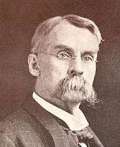Some understand Homoeopathy as a science presenting human sickness in forms to be perceived:
From center to circumference,
From head to feet,
From within out,
From highest to lowest,
From the vital centers to the periphery.
This may be said to be the vertex presentation whereby one thinks from things first to things last, perceiving the loves and the hates as the first and deepest of any sickness in man.
A sickness can be perceived in:
Perversion of the desires and aversions;
Perversion of the intelligence;
Disturbed memory;
Physical sensation perverted;
Disturbed functions or organs, with the attending circumstances;
Perverted sensations and sufferings of parts;
Tissue changes and pathological conditions;
Sensations and sufferings dependent upon the pathological conditions.
Causes that excite each of these are parallel to the perverted states themselves, in each sphere.
Any physician who can view a sick man in this way, from first to last, will be able to secure evidence that will enable him to adjust materia medica so that order will certainly be re-established.
This may be called birth by vertex-presentation.
Some physicians are utterly unable to perceive that the mental symptoms are first, will and understanding perverted, and are unable to perceive that the man himself has been unbalanced by heat, by cold, by light, and by electricity, in instances of excess, of defect or of perversion. They are utterly unable to perceive that the man as a whole, as of himself, may be perceived in a grasp collectively, and mentally analyzed by the measure of excess, defect, and perversion. Such men always see ultimate tissue-changes, pathology, as both cause and ultimate. I say see because they do not perceive.
The first-cited vision is to be perceived; the last can be seen and touched.
This latter might be termed breech presentation.
These two classes of men must always differ:
The first are philosophers and rational men; the others are materialists.
One class think from things first to things last, including all items in their places, and giving each its full value in relation to the whole; the other see the ultimates and give no value to the whole.
The first see sickness in its perversions:
Of the loves,
Of intelligence.
Of memory,
Of bodily sensations,
Of causes and
Of circumstance;
In greater and in lesser;
In general and in particular;
And these as they extend into ultimates.
The first are adherents of, and filled with, the doctrines; the second are not of, but against, the doctrines.
The second must see results of disease. They have no perception of causes and circumstance. When they see what they call causes they see only ultimates; they appear to lack ability to group the first conditions of disorder. They do not see order in the phenomena of disorder, nor in the symptoms of sickness. They see sickness only in its endings, or ultimates.
To heal the sick, man must perceive what in the body is in disorder, and he can perceive this only by viewing the phenomena of disorder. The phenomena that represent progress from cause to effect are often ignored until ultimates that can be seen and touched are present. This assumes that a thing can be a thing and at the same time the cause of itself.


